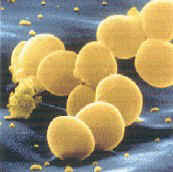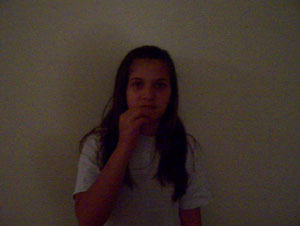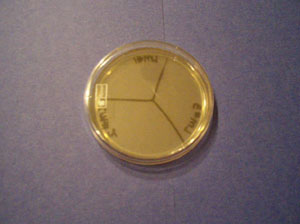Does Listerine kill bacteria?
SED 695B; Fall 2005
Research Question: If you rinse your mouth
with Listerine for 30 seconds, will there be a
decrease in the amount of bacteria in your mouth?
|
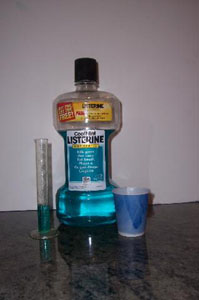 |
 |
 |
Standards addressed:
7th Grade Life Science
1. Cell Biology
a. Cells function similarly in all living organisms.
d. Cells divide to increase their numbers.
7. Investigation & Experimentation
a. Use appropriate tools & tests to collect data & display data.
b. Use a variety of print and electronic resources (including the internet)
to collect information and evidence as part of a research project.
e. Communicate the steps and results from an investigation in written
reports and oral presentations.
changes due to Listerine
use
• quantitative: number of colonies
• qualitative: color, odor, appearance
- Stored at same temperature.
- Stored with same light conditions.
Use of Listerine
classroom set
• 2 petri dishes per group(4 students
per group)
• approximately 18 petri dishes for a class of 36 students
Supplies:
1. petri dishes
Pre order them
from any science catalog. They cost approximately $5.76 for a pack of 20
petri dishes, if more than 10 pack are ordered at one time. The cost
is
$7.02 per pack for less than ten.
I plan on approximately 18 per class for my 5 periods. I usually use 100 for this lab.
2. agar
Preorder 100g of powdered agar for the lab. It cost approximately $40.01 from a science catalog. Agar is the gelatin that fills the bottom of the petri dish. It provides a place to grow the bacteria and food for the bacteria.
3) cotton swabs
If the funds are available, order the sterilized swabs through
a science catalog. I usually use Qtips purchased in a large Costco pack. My
classes use approximately 350 swabs for this lab.
4) Listerine
I buy it at Smart & Final or Costco.
Estimate 10mL per student. I use approximately 1.55L.
5) disposable cups
I buy them at Smart & Final. They are called souffle cups. They come in handy for many labs and activities.
6) 10mL graduated cylinders: 8 or 9
It is helpful to provide each group with a 10mL
graduated cylinder to measure out the Listerine.
7) permanent markers: 8 or 9
It is helpful to provide each group with a permanent marker to divide the petri dishes into student sections.
8) rulers: 8 or 9
It is helpful to provide each group with a ruler to draw straight lines on the bottom of the petri dish to make the student sections.
9) scotch tape:
8 or 9 rolls
It is helpful to provide each group with a roll of tape to seal the petri dish at the end of the instructions.
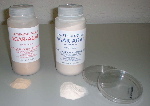
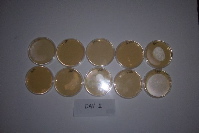
Procedures for the teacher:
(1) With students in their lab groups, have them determine the number of students
participating in the activity. Assign each participating student a
number. Start with number 1. Then mark the bottoms
and sides of the petri dishes as instructed.
(2) Each student that is participating will swab her/his mouth (gums and teeth)
with a cotton swab. Demonstrate how to swab your mouth. Review the video below.
If funds are available, use the sterilized swabs.
(3)Then students will gently wipe it across the agar in the petri dish marked
NM for “Normal Mouth” in the assigned student # section. Instruct
your students to roll the swab across the agar ten times in a zigzag formation
to insure consistently. The cotton swabs will be collected and thrown away.
(4) Students will measure out 10mL of Listerine per participant and
pour Listerine into the disposable cups. Each student that is participating
will then rinse his/her mouth with Listerine for 30 seconds. The paper cup
will
be collected and thrown away.
(5) Each student that is participating will again swab her/his mouth (gums
and teeth) with a cotton swab.
(6) Then students will gently wipe the swab across the agar in the petri
dish marked LM for “Listerine Mouth” in the assigned student
# section. Again, instruct your students to roll the swab across the
agar ten times in a zigzag formation to insure consistently. The cotton
swab will be collected and thrown away.
(7) Each group must securely tape the top of the petri dish to the bottom.
Students must place the tape around the sides only to avoid the blocking
of observing the changes in the petri dish.
(8) To be safe, the petri dishes must be sealed for the entire experiment.
If a student removes the tape and opens the petri dish, the student
will be prevented from participating in all experiments
and dissections for the remainder of the year.
(9) Students will complete four observations. See the included worksheet for the instructions.
(10) At the end of the experiment, the petri dishes must be disposed of properly. Check with your science department chair for your school disposal procedures.
Notes
••
Grow the bacteria at room temperature for slower results or grow the bacteria
under lights to replicate human body temperature of 37degrees Celsius
for quicker results.
•• Discuss possible problems of airborne contamination of petri
dishes and possible solutions.
•• Discuss how the number of bacteria colonies in the normal
mouth petri dish differs from student to student based on student oral hygiene
patterns, i.e. amount of time brushing teeth, amount of time passed since
last brushing, amount of time since last meal/snack.
• Remind students that dentist recommend brushing your teeth three times
a day for three minutes each time. Suggest your students time themselves
next time they brush. The average brushing time is 38 seconds.
•• Revise the lab report to fit your students' needs.
| Bacteria
Facts/Background • unicellular: Each organism is made of one cell. • prokaryotic: The prefix "pro" means before and the root, "karyotic," means core. This term is used to describe the lack of a nucleus in a bacterium cell. • microscopic: When bacteria multiple into millions to form a colony, then they become visible to the human eye. • Bacteria are found everywhere: soil, food, plants, and animals. • As with all organisms, they require water, food, and a place to live. • Bacteria are either classified in the Kingdom Eubacteria or Kingdom Archaebacteria. • If basic living requirements are met, one bacterium can reproduce into millions of bacteria within eight hours. • Approximately 96% of all species of bacteria are helpful to humans. • Only approximately 4% of the species of bacteria are harmful to humans. These species are responsible for diseases, such as: strep throat, tuberculosis, and the common cold.
|
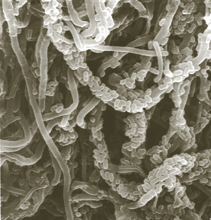 |
 |
| These are normal samples of bacteria found in the human mouth. | |
| a. The photograph on the left shows a single colony of bacteria taken by an electron microscope. | b. The photograph on the right shows a variety of microorganisms growing on the agar in the petri dish. |

| Click
on the photograph to the left to view the "How to Swab" video. |
Show your students how to swab their mouths to insure consistent technique. |
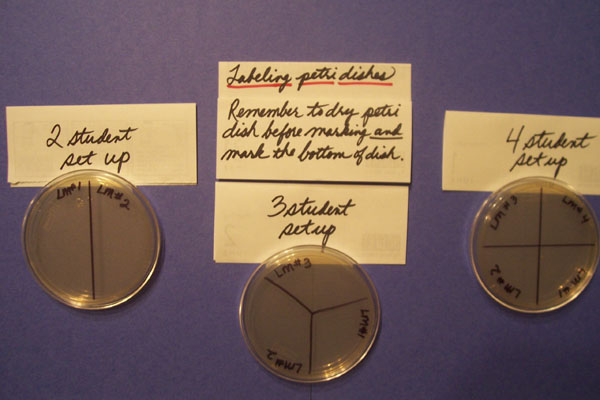
| Click on the photograph on the left to view the video showing how to transfer the bacteria from the swab to the agar in the petri dish. | Demonstrate to your students how to swab the agar. Remember to apply gentle pressure and to lift the lid of the petri dish slightly and quickly to avoid airborne microorganisms. |
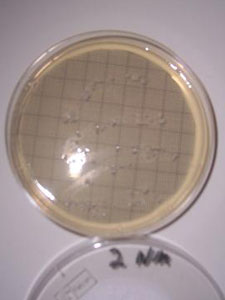
• Students will make observations on several occasions, perhaps on Day 3, Day 5, Day 7, and Day 9, depending on your class schedules and the odors created by the bacteria.
• Students will draw the results of their petri dishes using the grids
to represent the numbers and sizes of colonies growing.
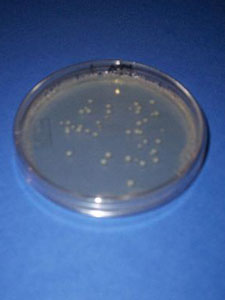
This
is Day 7 from a
sample of a "normal mouth."
What is normal,anyways?

This
is Day 9 from a
sample of a "normal mouth."
The
teacher overhears one lab partner telling
another student, "Really, I do brush
my teeth each morning!"
|
Click on the grid to print a copy. • Print out the grid paper, cut out to fit the
|
 |
 |
 |
 To download this page as a .pdf, click here.
To download this page as a .pdf, click here.
 To download this page as a .pdf, click here.
To download this page as a .pdf, click here. References & Links:
http://www.phschool.com/atschool/science_explorer/bacteria
http://www.science-projects.com/classexpts.htm#modules
http://www.disknet.com/indiana_biolab/b.htm
http://www.madsci.org/
http://www.disknet.com/indiana_biolab/default.htm
